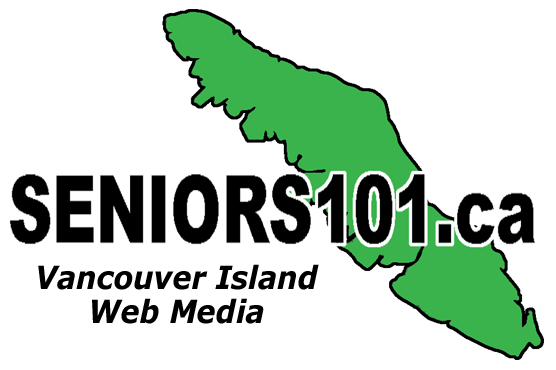Office of the Seniors Advocate releases 2019 Monitoring Seniors Services report
The B.C. Seniors Advocate, Isobel Mackenzie, today released the Monitoring Seniors Services 2019 (MSS 2019) report. The report, published annually, measures the performance of senior services across health care, housing, transportation, income supports, and personal supports.
The MSS 2019 report provides a comprehensive picture of the services being offered to B.C. seniors and highlights some of the gaps in those services.
Over the past five years, it has become clear that the province needs better data when it comes to tracking and reporting on elder abuse. “The current approach is not providing us with reliable information on the magnitude or root causes of elder abuse and neglect,” said Seniors Advocate Isobel Mackenzie.
“For this reason, the Office of the Seniors Advocate (OSA) has launched a systemic review of the current system and we expect a report with recommendations will be available later in 2020.”
“We clearly have work to do in terms of increasing our vaccination rates among seniors, and among the public as well. The public health data is clear: vaccine efficacy diminishes with age,” said Mackenzie. “The best protection for frail and elderly seniors is not only the vaccination of seniors, but of the people around them.”
There is mixed progress on home supports. We saw progress on short-term home support clients, and that is directly linked to the reduced length of stay in hospitals; however, we fell behind a little on the client count for long-term home support and hopefully this will be a focus in the coming year.
While the Shelter Aid for Elderly Renters (SAFER) program is offering more subsidy to more seniors, there is a worrisome trend developing in the number of seniors subsidized housing units.
There was also positive news this year. The government made a commitment to invest in Adult Day Programs. The results of those investments are now visible, with a 10% increase in clients for Adult Day Programs and a 1.5% reduction in the waitlist. “This is welcomed news for many families who can now find some respite for themselves, and some needed company for their loved ones,” said Mackenzie.
Highlights from the report:
- The proportion of the seniors population grew from 14% in 2008 to 18% in 2018; those aged 75-84 and 85 or older have remained at 5% and 2% since 2008.
- The distribution of the seniors population is not consistent across the province with the percentage of seniors ranging from a high of 24% on Vancouver Island to a low of 13% in Northern Health.
- 37% of seniors received the publicly funded flu vaccine; 87% of long-term care residents and 74% of staff were vaccinated.
- Marked improvement in the access to Adult Day Programs with 10% more clients and a 1.5% reduction in the wait-list.
- Short-term home support experienced an increase in clients, which links to the reduction of the average length of stay in hospitals; however, long-term home supports saw a decrease in both the number of clients and in the average hours per client.
- Long-term care experienced increases in wait times and in the number of seniors placed on the wait list, although both wait times and waiting list are shorter than 2014/15 when data were first reported.
- Small incremental increases in the number of funded long-term care beds, with an increase of 464 beds (2%) over the past five years.
- Assisted living continues to see flat to negative growth and the waiting list now represents 20% of total available units.
- Better at Home saw an increase in the number of services offered; however, there is a continued trend of fewer new clients each year; this is reflective of existing clients staying on service and fixed funding that creates waiting lists.
- Alzheimer Society First Link dementia support served 11,567 unique clients in 105 communities, with 5,000 new clients.
- Property tax deferral continues to grow with a total of 63,581 seniors deferring over $237 million.
- The Shelter Aid for Elderly Renters (SAFER) subsidy continues to grow beyond the rate of population growth; showing an increase in the proportion of seniors that rent and who require financial support. A total of 24,233 seniors were SAFER recipients with an average subsidy of $215 per month.
- This is the fifth straight year there is a decline in the number of seniors subsidized housing units and an increase in the number of seniors on the waiting list. This year the waitlist increased by 14%.
- The number of HandydDART clients in the BC transit system are down for the second year in a row, although up in the TransLink system.
- 29% (264,000) B.C. seniors are in receipt of the Guaranteed Income Supplement (GIS). The 3.9% increase in recipients is proportionate to the increase in the population.
- The elimination of MSP premiums and recent changes to the Pharmacare deductibles and co-payments will have a positive financial impact on low- and moderate-income seniors. The degree of impact will vary depending on individual circumstances.
- This is the fifth year of increases in the reporting of Abuse and Neglect to the Seniors Abuse and Information Line (SAIL), with a 7% increase in the last year.
- The number of seniors reported missing to the RCMP increased in proportion to the seniors population growth between 2014 and 2018.
The complete report can be found at: www.seniorsadvocatebc.ca
 Office of the Seniors Advocate,
Office of the Seniors Advocate,
1515 Blanchard Street,
Victoria, BC.
250-952-3181 or 1-800-952-3181.
Email seniorsadvocate@gov.bc.ca.
Web page. www.seniorsadvocatebc.ca

